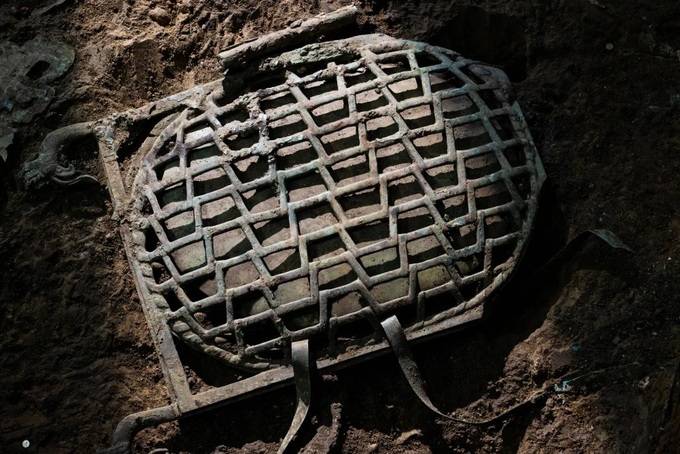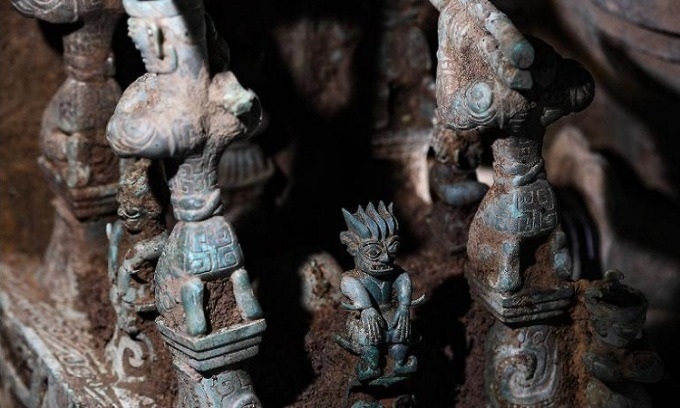About 13,000 antiques were discovered in six sacrificial pits at the Tam Tinh Doi site near Chengdu, Sichuan province, China. This site is believed to belong to ancient Shu. The new discovery could help archaeologists better understand the kingdom that once dominated the Sichuan region along the upper Yangtze River.
The archaeological team from the Sichuan Provincial Institute of Cultural Relics and Archaeology, Peking University, Sichuan University and other research institutions have excavated six sacrifice pits since 2020.
New discoveries are mainly excavated in holes 7 and 8. The most prominent is an antique with a turtle-shaped lid at the top and bottom, copper hinges on both sides, and a guard-shaped dragon head handle. in each corner. Inside the box is a large jade block placed firmly inside, with a buckle. It seems that the artifact is still intact.

According to Mr. Li Haichao, archeology professor from Sichuan University, this is the discovery that surprised him the most. “Although we don’t know exactly what this artifact was used for, but with its special shape and skillful craftsmanship, it is possible that this was something that was very much appreciated by the ancients. The item is now beyond comprehension. know ours,” said Professor Li.
According to this professor, the antique has a high level of craftsmanship and sophisticated design. The archaeological team also found some pieces of gold on the back of the jade block after cleaning the box, but they were still more interested in the large jade block inside. When the box is opened, experts hope to gather more important clues about the ancient civilization that created it.

At hole 8, the archaeological team unearthed additional artifacts including a golden mask, a bronze sculpture in the shape of a snake’s head, a bronze altar, a giant bronze mythical creature, a bronze dragon item.
“The sculptures are designed in an extremely complex and imaginative way, reflecting the fairy world imagined by people at that time. Thereby, they also show the diversity and richness of the background. Chinese civilization,” said Zhao Hao, an associate professor from Peking University, who led the excavation team at hole 8.
Around the pits, the team also found ash trenches, architectural foundations and small sacrifice holes. Remains such as reeds, bamboo, wild boar and livestock may have been used for sacrifice.








